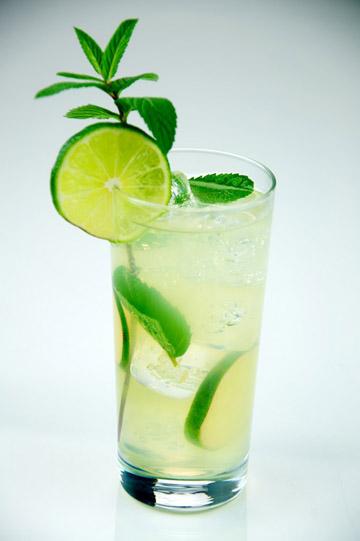Cocktail Of The WeekSeptember 19, 2012
By • September 20, 2012 0 1217

Travelers have flocked to Latin America for years as a means of escape. As you head south of the border, the climate heats up, the beaches become more tropical and the party starts a little earlier in the day. In places like Rio de Janeiro, Costa Rica and much of Mexico, the clock always seems to read 5 o?clock.
Many Latin American countries produce their own native liquors, which are as varied as their people. These drinks are a source of pride and nationality. Mexico?s tequila is probably the most well known. In Brazil, the most popular cocktail is the caipirinha, which is forged from cachaca. And anyone who reads my column should be familiar with pisco, after my posts from my Peruvian summer.
Before Peru, I had the luxury of stopping for two weeks in Colombia. The most popular drink there is aguardiente. This local spirit is a somewhat sweet elixir made from sugarcane and flavored with anise. Aguardient is not aged, so it boasts a strong and robust flavor. Aguardiente literally means firewater in Spanish; the name combines the Spanish words for ?water? (agua) and ?fiery? (ardiente).
Arriving in Medellin in June was a delight in itself. When I left D.C. earlier in the day, it was 104 degrees and humid. Medellin, perched in the Andes, is known as the city of everlasting spring due to its pleasant year-round climate, which averages in the mid 70s. Humidity is low, and fresh air rushes in from the surrounding jungle-filled mountains. In addition to its near-perfect weather, Medellin boasts a vibrant art scene, where Fernando Botero is a native. The city also has a thriving nightlife.
Many of the fashionable bars and clubs are located around Lleras Park in the tiny Poblado neighborhood. I quickly find the locals have a very relaxed partying style. While the open-air watering holes that ring the park are filled with partygoers, so is the park itself. Folks gather together on the benches and ledges to enjoy each other?s company while sipping on a tipple. Open containers laws do not apply here.
It is here I get my first taste of the local firewater. As I?m enjoying a beer on a park bench, my seatmates Carla and Roberto eagerly offer me a taste of their aguardiente. The flavor is strong and torrid. It burns and makes me grimace. I am happy to have my beer to chase it. In defense of the aguardiente industry, I don?t believe my first taste was of the highest quality. It came packaged in a box.
I soon realized that aguardiente was a common thread between the people of Medellin, affectionately called paisas. During my visit, I sampled aguardiente in small bars, people?s homes, trendy restaurants and my favorite hangout, Periodista Park. The flavor, after I had the chance to taste some of higher quality brands, grew on me. The same way the licorice taste of ouzo grows on you in Greece.
Aguardiente is generally served straight up neat in a glass. But when I ventured to Cartagena on Colombia?s Caribbean coast, where rum is the preferred beverage, I noticed that it was also used in cocktails.
The most interesting one I indulged in was a variation on the mojito with aguardientes substituted for rum. While at first the idea of anise mixed with lime and mint sounded a bit odd, I must admit that the combination came off as multilayered, refreshing surprise. Somehow the spicy anise balanced itself with the mint, while the lime provided a pleasing tart background.
The most popular brand in Colombia is Aguardiente Antioque?o, which has won several international awards. If you?d like to experience aguardiente for yourself, the most readily available brand in the Washington area is Cristal. Try it straight up, first but if the taste is a little too overwhelming, mix it in a mojito.
*Aguardiente Mojito*
2 oz. aguardiente
8 fresh mint leaves
1/2 lime in wedges
2 tablespoons simple syrup or sugar
Club Soda
Crushed Ice
Sprig of fresh mint
Muddle mint leaves and lime in a glass. Add simple syrup or sugar; top with ice. Add aguardiente; top with club soda. Stir. Garnish with a sprig of mint.

